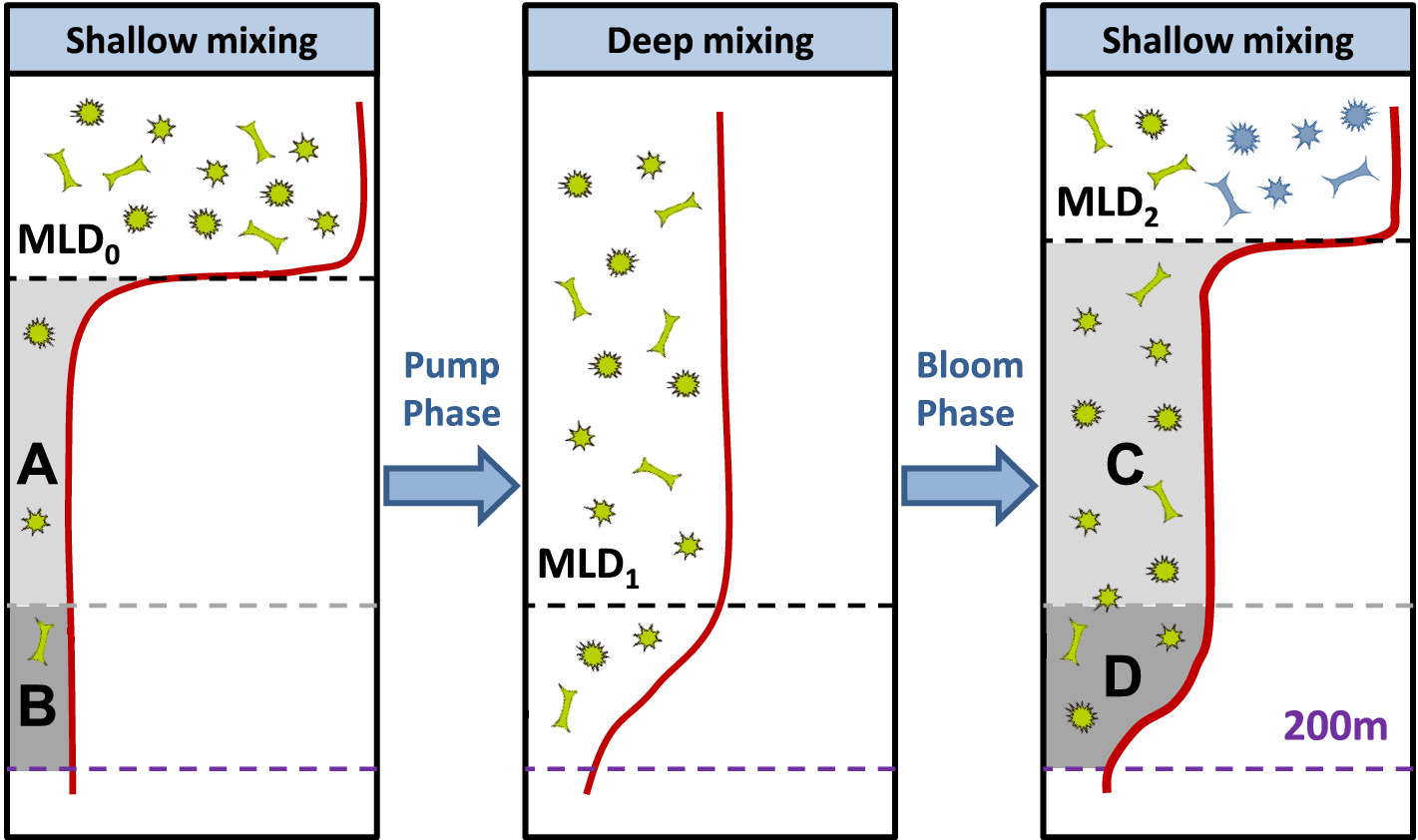Enhanced Winter Carbon Export Observed by BGC‐Argo in the Northwest Pacific Ocean
Xiaogang Xing, Mark L. Wells, Shuangling Chen, Sheng Lin, Fei Chai
Published in Geophysical Research Letters, OCT 2020
The winter‐ and spring‐time mixed‐layer pump (MLP) significantly augments the global carbon transport from the surface mixed layer to deeper waters when ephemeral surface phytoplankton blooms are repeatedly mixed to depth. Exploiting unusual 190 + daily BGC‐Argo profiling measurements within a recirculation gyre, we show repetitive MLP episodes generating a January–March averaged particulate organic carbon (POC) export of ~110 mg C m−2 day−1 in the midlatitude (31°N) Northwest Pacific. Subsampling this dataset on a 5‐ or 10‐day cycle yielded an order of magnitude less export, or even totally missed all the MLP events. The evidence here supports the need for new strategies if the BGC‐Argo program is to adequately quantify ocean carbon cycling and its effects on biological systems. We propose that a handful of floats be tasked with daily profiling, and machine learning strategies be used to link these data with satellite derived measurements to estimate the synoptic‐scale MLP export.

Fig2. Schematic of the mixed‐layer pump (MLP) event. The MLP comprises two alternating stages—pump and bloom—that begins with a period of calm wind, where the resultant heating and weak wind generates a shallow, well‐lit mixed layer (MLD0) that enables phytoplankton growth to occur. The pump phase is initiated by increased wind followed by deepening the mixed layer (MLD1), mixing and diluting the phytoplankton downward, light‐limited growth, and infusing new nutrients to the surface. The subsequent bloom phase begins when the winds calm down one to several days later, thereby resetting the system by enabling surface heating and resurrecting phytoplankton growth. The cycling between these phases “charges” phytoplankton production above the level possible under continuous wind, a major portion of which is exported to the mesopelagic zone. Lacour et al. (2019), unable to quantify the short‐term dynamics of this process with the longer profiling intervals in their dataset, assumed steady‐state conditions and estimated carbon export as the difference between C and A. Using our daily sampling profiles, and assuming 200 m to be the upper threshold of the mesopelagic zone in our study region, we calculate carbon export using [(C + D) − (A + B)].
Xing, X., Wells, M. L., Chen, S., Lin, S., & Chai, F. (2020). Enhanced winter carbon export observed by BGC‐Argo in the Northwest Pacific Ocean. Geophysical Research Letters, 47, e2020GL089847. https://doi.org/10.1029/2020GL089847.